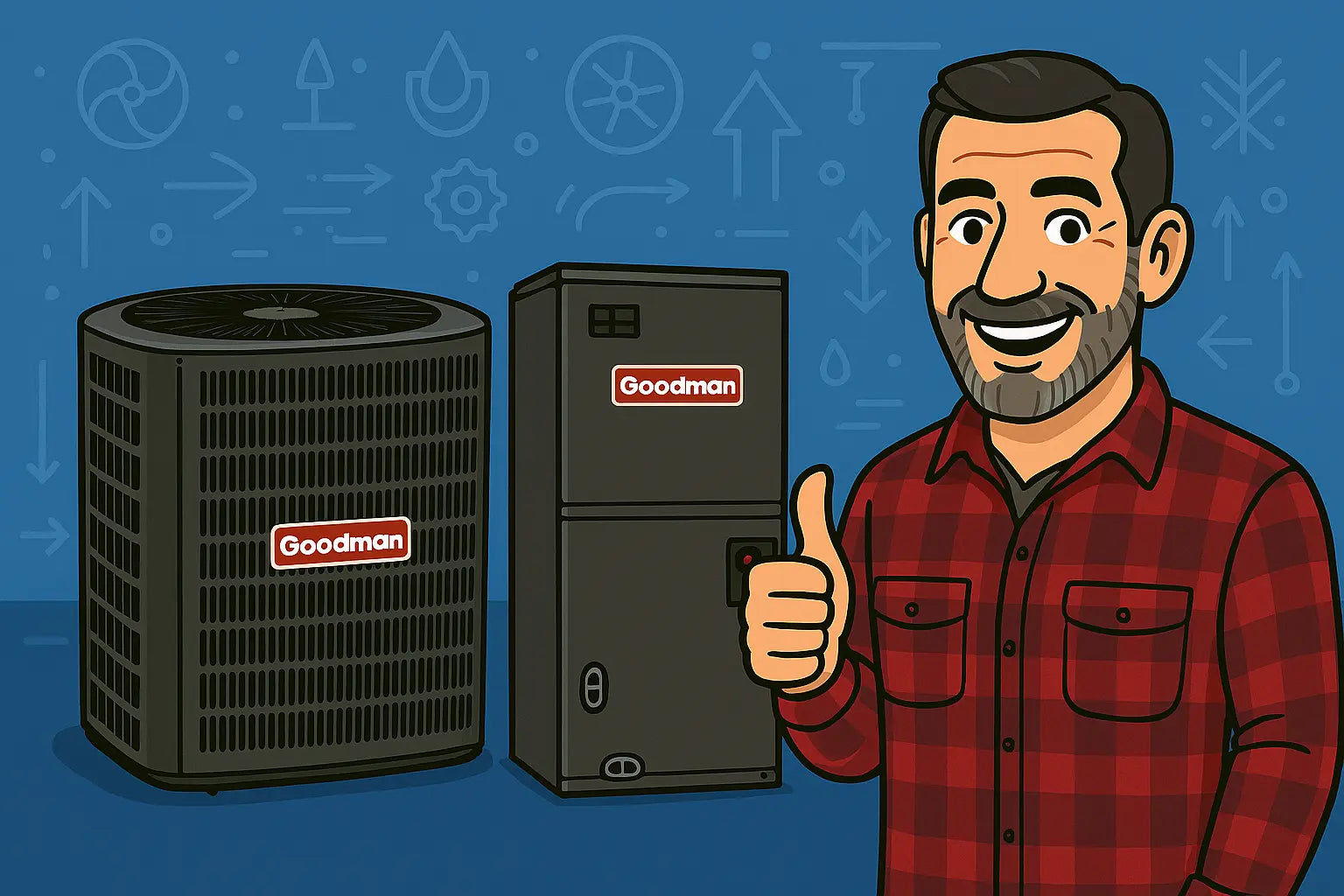Hey Friends! Mike Here!
Installing a Goodman GLXS4BA6010 5-Ton R-32 Air Conditioner Condenser with the AMST60DU1300 Air Handler is a serious project. While many homeowners like to handle some parts of the installation themselves, the electrical work is one area where cutting corners can be dangerous. In this guide, I’ll walk you through key wiring and safety considerations for your Goodman 5-Ton system so you can keep your installation safe, reliable, and up to code.
Why Electrical Safety Matters in HVAC Installation
Your Goodman system uses high-voltage power, and even a small mistake in wiring can lead to electrical shorts, damaged components, or serious safety hazards. Proper wiring isn’t just about getting your air conditioner to turn on—it ensures efficiency, prevents overheating, and protects your investment for years.
According to the National Fire Protection Association (NFPA), electrical distribution is a leading cause of home fires. That’s why handling HVAC wiring requires both technical knowledge and respect for safety protocols.
Understanding the Electrical Requirements
The Goodman GLXS4BA6010 condenser and AMST60DU1300 air handler require dedicated circuits with proper breakers sized to manufacturer specifications. Always check the unit’s electrical rating plate for details.
-
Condenser (GLXS4BA6010) – Typically requires a 208/230V power supply with the correct breaker size and wire gauge.
-
Air Handler (AMST60DU1300) – Also runs on a 208/230V circuit and may require an additional breaker for auxiliary heat strips.
For official guidance, refer to Goodman’s installation manual, which outlines exact breaker and wiring requirements.
Choosing the Right Wire and Breaker Size
Using the wrong wire gauge can cause overheating and even fire hazards. For example, a 5-ton system pulling 40 amps should be paired with the correct breaker (often 50A, depending on code) and wire gauge (usually 6 AWG copper, but confirm based on local requirements).
If you’re not sure, the National Electrical Code (NEC) provides detailed guidelines. Many areas also require a licensed electrician to verify and sign off on the installation.
Proper Grounding and Bonding
One of the most overlooked steps in HVAC installation is proper grounding. Grounding ensures that if there’s a short, electricity flows safely into the earth instead of through your equipment—or you. The Occupational Safety and Health Administration (OSHA) emphasizes grounding as a key protection against electrical shock.
Always check that:
-
The condenser and air handler are properly bonded.
-
Ground wires are secured to both the disconnect and service panel.
-
Metal conduit is grounded per code.
Installing a Safety Disconnect
Every condenser requires a disconnect box located within sight of the unit. This is more than just a code requirement—it’s a safety feature. If maintenance or emergency repairs are needed, the disconnect allows quick power shutoff.
A fused or non-fused disconnect can be used depending on local code. The International Association of Electrical Inspectors (IAEI) recommends disconnects as a best practice for all HVAC installations.
Common Wiring Mistakes to Avoid
Here are a few errors I often see in DIY or rushed installations:
-
Undersized wires – Causes overheating and can damage your system.
-
Loose connections – Lead to arcing, tripped breakers, or burned terminals.
-
No drip loop – Outdoor wiring should always have a drip loop to prevent water intrusion.
-
Improper breaker size – Either oversized (dangerous) or undersized (constant tripping).
-
Skipping the disconnect – Unsafe and often fails inspection.
When to Call a Professional
If you’re not comfortable working with high-voltage wiring, don’t risk it. A licensed electrician or HVAC installer can ensure your Goodman GLXS4BA6010 and AMST60DU1300 system is wired safely and in compliance with local codes.
Remember, electrical work isn’t an area to save a few bucks. Mistakes can cost you far more in equipment damage, code violations, or safety risks.
For more details, the U.S. Department of Energy has great homeowner resources on safe electrical practices for HVAC and energy systems.
Final Thoughts From Mike!
Installing a high-capacity system like the Goodman GLXS4BA6010/AMST60DU1300 requires more than just basic HVAC know-how—it demands careful attention to wiring safety, grounding, and breaker sizing. By following NEC standards, double-checking connections, and using professional-grade tools, you’ll reduce the risk of costly mistakes and ensure your system runs efficiently for years to come.
For homeowners who prefer peace of mind, investing in a professional installation is always the safest choice. It guarantees compliance with local codes, maintains warranty protection, and provides assurance that your equipment is set up for peak performance.
If you’re considering this system for your home, you can explore the Goodman GLXS4BA6010/AMST60DU1300 5-Ton 14 SEER2 R-32 System directly at The Furnace Outlet to learn more about its specifications, compatibility, and value. With the right installation approach, this unit can deliver powerful, reliable cooling while keeping your household safe and comfortable.
Need maintenance tips for this system? Visit my guide: Seasonal HVAC Care.
- Mike, your neighborly HVAC guide!







